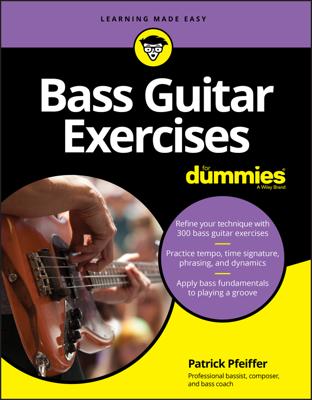Defining the style of a tune is your primary function as a bass guitarist. You can use a bass guitar to create a number of different musical styles. You define a style by the notes and rhythms you choose — and you have to do this while locking in with the drums! Take a look at a few of the most common styles:
Rock. A lot of styles are really part of one big overall style, such as rock. Rock styles are generally played with a steady eighth-note pulse, tightly locked with the drums, that drives the song.
Swing. Swing styles are based on the triplet feel. With the triplet, the beat is subdivided into three equal units instead of the usual two. Swing is somewhat lighter than the rock styles, and it includes the shuffle as well as jazz walking lines.
Funk. Funk styles rely heavily on the sixteenth note, the smallest rhythmic subdivision commonly used in music. For bassists, this is the busiest style: You have lots of notes to play. You need to lock in very firmly with the drums and keep the groove tight. This style focuses a lot of attention on the bass and is usually a technical challenge.
World beat. World beat is a widely recognized category in almost any record store. "World beat" is a general term to describe styles that are not native to North American music but are still relatively common, such as South American, African, and Caribbean styles.
Odd meters. Styles using odd meters aren’t part of the regular four-beat patterns you may be used to, but meters that use five, six, or seven beats and beyond are definitely part of the odd meter family. Although unusual, these odd meters can sound quite natural when played correctly. In fact, the waltz (three beats to the measure) is an odd meter style that arguably feels very natural because it’s so common.

